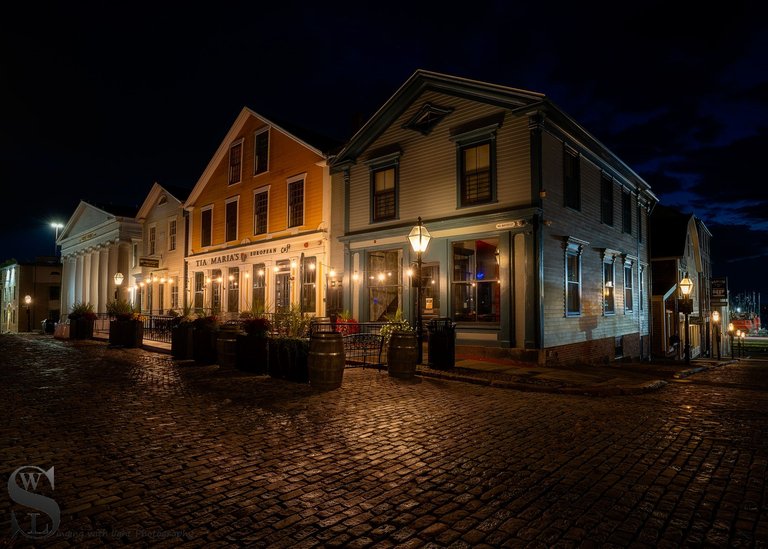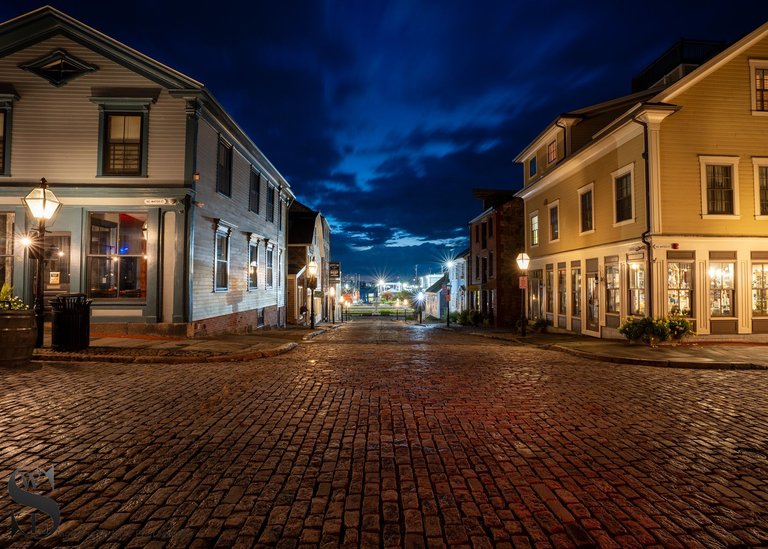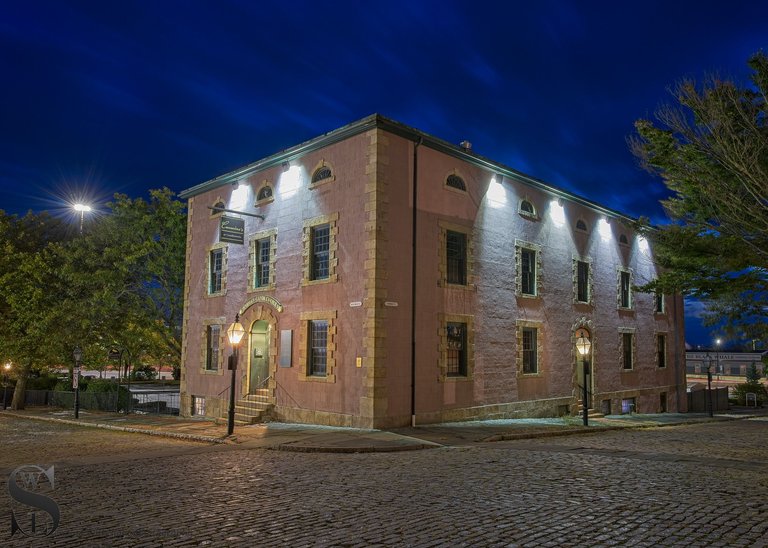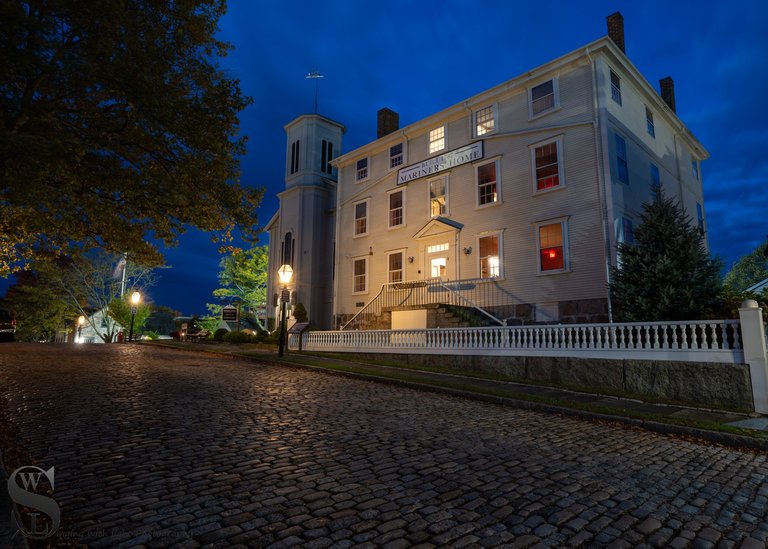New Bedford MA historic district
Good Morning I hope all is well for you
Now I titled this post the Historic District of New Bedford but when I was looking it up online i was surprised to find that New Bedford has 13 districts classified as historic districts and this area is strictly speaking called the Bedford Landing-Waterfront Historic District and here is some info about this area I found online
The Bedford Landing-Waterfront Historic District is also known as the New Bedford National Register Historic District . This district, is approximately 20 acres and contains 20 buildings that are significant examples of architecture built between 1810 and 1855. The entire District was designated a National Historical Landmark in 1966. These buildings are representative of structures that would be found in the commercial district of a major New England seaport of that period. In addition to the primary buildings, the district contains good examples of smaller Federal and Greek Revival buildings with shops on the ground floor and loving quarters above, and several gable-roofed warehouses of brick or stone, 2-1/2 to 4 stories in height.
New Bedford began its rapid growth as a whaling port shortly after the town’s establishment in the early 1760s. By 1840, New Bedford had superseded Nantucket as the nation’s leader in the whaling industry and maintained that position until the growth of the petroleum industry, which began in the late 1850’s, bringing American whaling to an end. New Bedford’s last whaling voyage ended on August 20, 1925.
The Bedford Landing-Waterfront Historic District fits shares its borders with the New Bedford Whaling National Historical Park established by Congress in 1996.
I sometime son my wmorning walks drive and park by the Port and then decide whether to walk around the port or cross the road and head into the historic district, both spots i love walking inthe early morning light or often lack of light
A few of the shops on one of the roads. the Middle one Tia Marias we have been to for breakfast one day and the food was top notch

Sony A7iv 19mm F7.1 8 Sec ISO 100
Click here to view larger
Looking down a side street by the buildings in the first shot looking towards the port

Sony A7iv 17mm F10 30 Sec ISO 100
Click here to view larger
Next up is the Rodman Candleworks building
it was built in 1810 and was owned by candle maker Samuel Rodman. New Bedford was a prime location for the candle industry because of its connection to whaling. The brightest candles were made from spermaceti, a liquid found in massive quantities inside the skull of a Sperm Whale.
As New Bedford was a big whaling city back inthe day It makes sense the built this factory here close to the port.
The candle factory remained in business until after the Civil War, at which time the building was converted into a warehouse.
By 1963, the Rodman Candleworks Building stood empty, and it was damaged by fire a few years later. Slated to be torn down, the Waterfront Historic Area League and the Architectural Conservation Trust stepped in and halted the demolition. The building was restored in 1979 and is today used for commercial space

Sony A7iv 22mm F10 8 Sec ISO 100
Click here to view larger
and also in this area the Whaling Museum

Sony A7iv 27mm F8 10 Sec ISO 100
Click here to view larger
The Mariners Home, which was original the home of William Rotch Jr
From 1834 to 1850, William Rotch Jr and has an interesting history .
In 1790 he and his wife Elizabeth built a new home on the corner of William and North Water Street on the site of his grandfather Joseph Rotch’s house. Joseph, who helped pioneer the colonial whalefishery of Bedford Village, died in 1784.
His house had been burned by the British during the American Revolution. William and his family lived in the house on the corner of William and Water streets until they moved up the hill to County Street in 1834..
From 1834 to 1850, William Rotch Jr.rented his home for a variety of commercial uses. After his passing in 1850, William’s daughter Sarah Rotch Arnold donated the home to the New Bedford Port Society. It was moved up to Johnny Cake Hill and placed next to the Seamen’s Bethel, where it became known as the Mariners’ Home.
Since 1851, the Mariners’ Home was operated by the Ladies Branch of the New Bedford Port Society for the Moral Improvement of Seamen (established in 1830). The Home served as a safe and moral boarding house for whalers, fishermen, and other mariners in the Port of New Bedford. The Mariners’ Home was purposefully located close to the Seamen’s Bethel (built in 1834) where sailors could hear sermons and gain reassurance and inspiration before setting off on their long voyages. Well into the 21st century the Mariners’ Home provided a haven for New Bedford’s seamen.

Sony A7iv 20mm F8 20 Sec ISO 100
Click here to view larger
Next up the Seamens Bethel
it was established in 1822, and this iconic chapel has served as a spiritual haven for generations of mariners, offering solace and guidance to those who braved the open seas.
it's storied past is interwoven with tales of whaling voyages, intrepid sailors, and a deep-rooted community that has cherished its nautical traditions for nearly two centuries. Immortalized in Herman Melville’s literary masterpiece “Moby-Dick,”

Sony A7iv 20mm F8 13 Sec ISO 100
Click here to view larger
And that’s all folks
unless stated otherwise all photos used in my posts are taken and owned by myself, if you wish to use any of my images please contact me.







 )
)